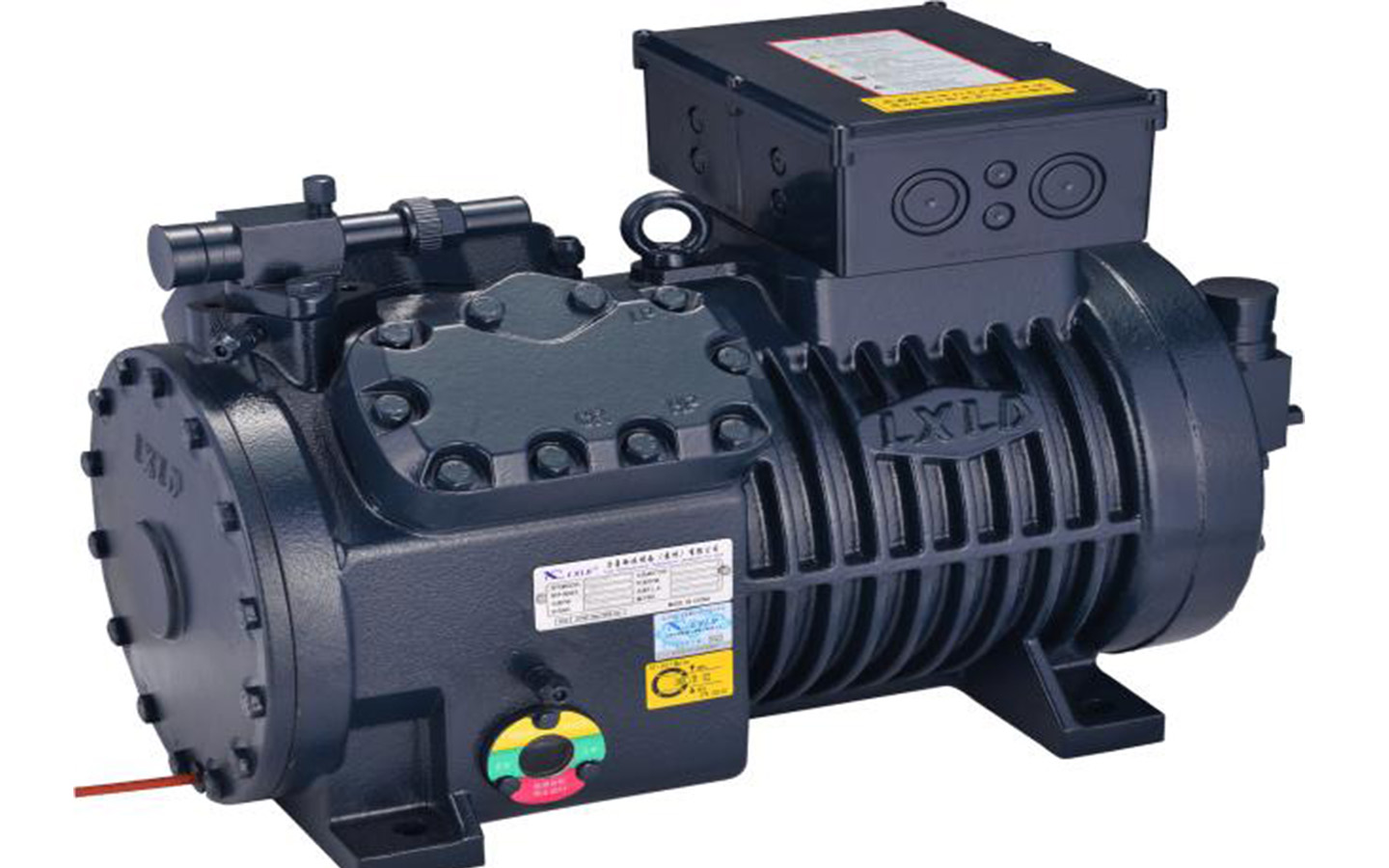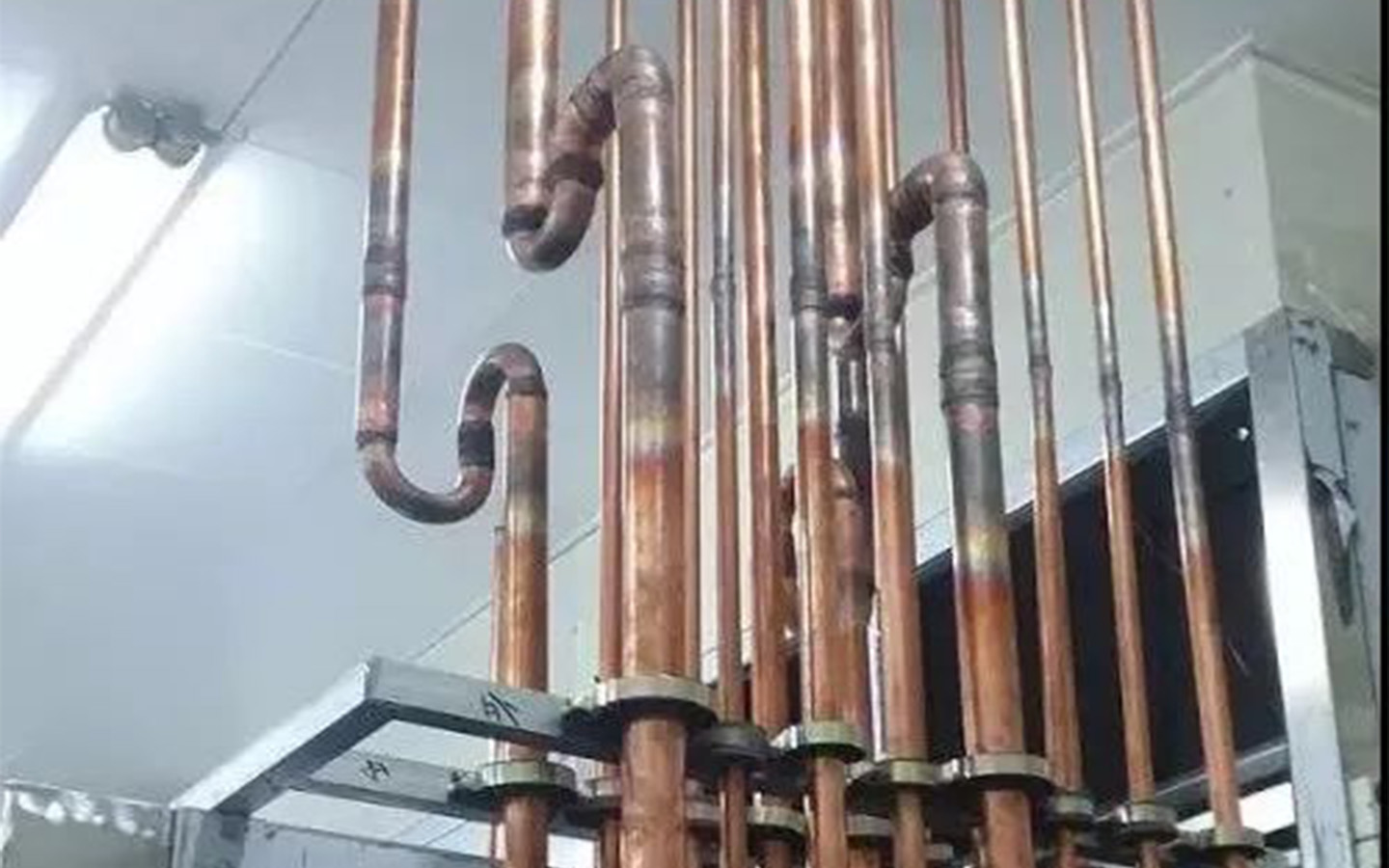A compressor is a complex machine that operates at high speeds. Ensuring sufficient lubrication for the moving parts such as the crankshaft, bearings, connecting rods, and pistons is a basic requirement for maintaining proper operation of the machine. Therefore, compressor manufacturers specify the use of specific grade of lubricating oil and regular inspection of oil level and color.
Lack of oil is one of the easily identifiable compressor failures. When a compressor lacks oil, there is very little or even no lubricating oil in the crankcase.
A compressor is a special type of gas pump, and a small amount of lubricating oil (referred to as carryover oil or oil carryover) is carried along with the discharged refrigerant gas. Oil carryover in compressors is unavoidable, although the rate at which it occurs may vary.
For a semi-hermetic piston compressor, the discharge gas typically contains approximately 2-3% of lubricating oil, while for a scroll compressor it is around 0.5-1%. For a 6-cylinder compressor with a displacement of 100 m3/hr and a crankcase oil capacity of 6 liters, a 3% oil carryover would mean an oil carryover rate of approximately 0.3-0.8 liters per minute or a non-return operation time for the compressor of around ten minutes. If the lubricating oil discharged from the compressor does not return, the compressor will lack oil.

There are two ways for a compressor to return oil: through an oil separator or through a suction pipe.
An oil separator is installed in the compressor’s discharge line and is generally able to separate 50-95% of the carryover oil. This method provides good and fast oil return, significantly reducing the amount of oil entering the system and effectively extending the non-return operation time.
In refrigeration systems with long pipelines, liquid-filled ice-making systems, and freeze-drying equipment operating at very low temperatures, it is not uncommon for the compressor to operate for several minutes or even tens of minutes without oil return or with very little oil return. Poorly designed systems may face issues with low oil pressure in the compressor, leading to shutdown. Installing an efficient oil separator in such refrigeration systems can greatly extend the non-return operation time and ensure the compressor safely passes through the critical period after startup without oil return.
The oil that is not separated will enter the system and circulate with the refrigerant in the pipes, forming an oil circulation. On one hand, due to low temperature and low solubility, a portion of the lubricating oil separates from the refrigerant. On the other hand, at low temperatures, the viscosity of the separated oil increases, making it difficult for the oil to flow and causing it to adhere to the inner walls of the pipes. The lower the evaporation temperature, the more challenging the oil return becomes. This requires proper design and construction of the evaporator and suction pipe to facilitate oil return. A common practice is to use a downward pipeline design and ensure a high airflow velocity.

In practical applications, oil return problems caused by improper design of the evaporator and suction pipe are not uncommon. For R22 and R404A systems, oil return in a flooded evaporator is relatively difficult, and the system’s oil return pipeline design must be carefully considered. Using a high-efficiency oil separator can significantly reduce the amount of oil entering the system pipeline and effectively extend the time without oil return after startup.
When the compressor is located higher than the evaporator, a vertical bend in the suction pipe for oil return is necessary. The oil return bend should be as compact as possible to minimize oil retention. The spacing between oil return bends should be appropriate, and if there are a lot of oil return bends, some lubricating oil should be supplemented.
The oil return pipeline in a variable load system also needs to be carefully designed. When the load decreases, the suction velocity decreases, which is not conducive to oil return. To ensure oil return at low loads, a vertical double pipe can be used.
Frequent compressor startups are not conducive to oil return. Due to the short continuous operation time of the compressor, there is not enough time for a stable high-speed airflow to form in the suction pipe, and the lubricating oil can only be left in the pipeline. If the oil return is less than the carryover oil, the compressor will be oil-starved. The shorter the operation time, the longer the pipeline, and the more complex the system, the more prominent the oil return problem.
During defrosting, the temperature of the evaporator rises, and the viscosity of the lubricating oil decreases, making it easier to flow. After the defrost cycle, the refrigerant flow rate is high, and the retained lubricating oil will concentrate and return to the compressor. Therefore, the frequency and duration of the defrost cycle should be carefully set to avoid large fluctuations and even oil shock. When there is a significant refrigerant leak, the suction velocity will decrease, and if the velocity is too low, the lubricating oil will remain in the suction pipe, and it cannot quickly return to the compressor. Liquid startup caused by refrigerant migration can also cause difficulties for internal oil return, but usually for a short time, at most a few tens of minutes.

 Español
Español Русский
Русский Tiếng Việt
Tiếng Việt 中文
中文 suomi
suomi Français
Français Português
Português English
English Deutsch
Deutsch Français
Français Español
Español Italiano
Italiano Português
Português Pусский
Pусский


